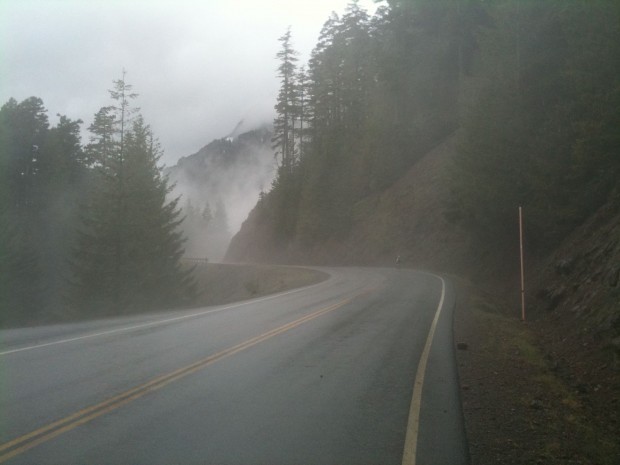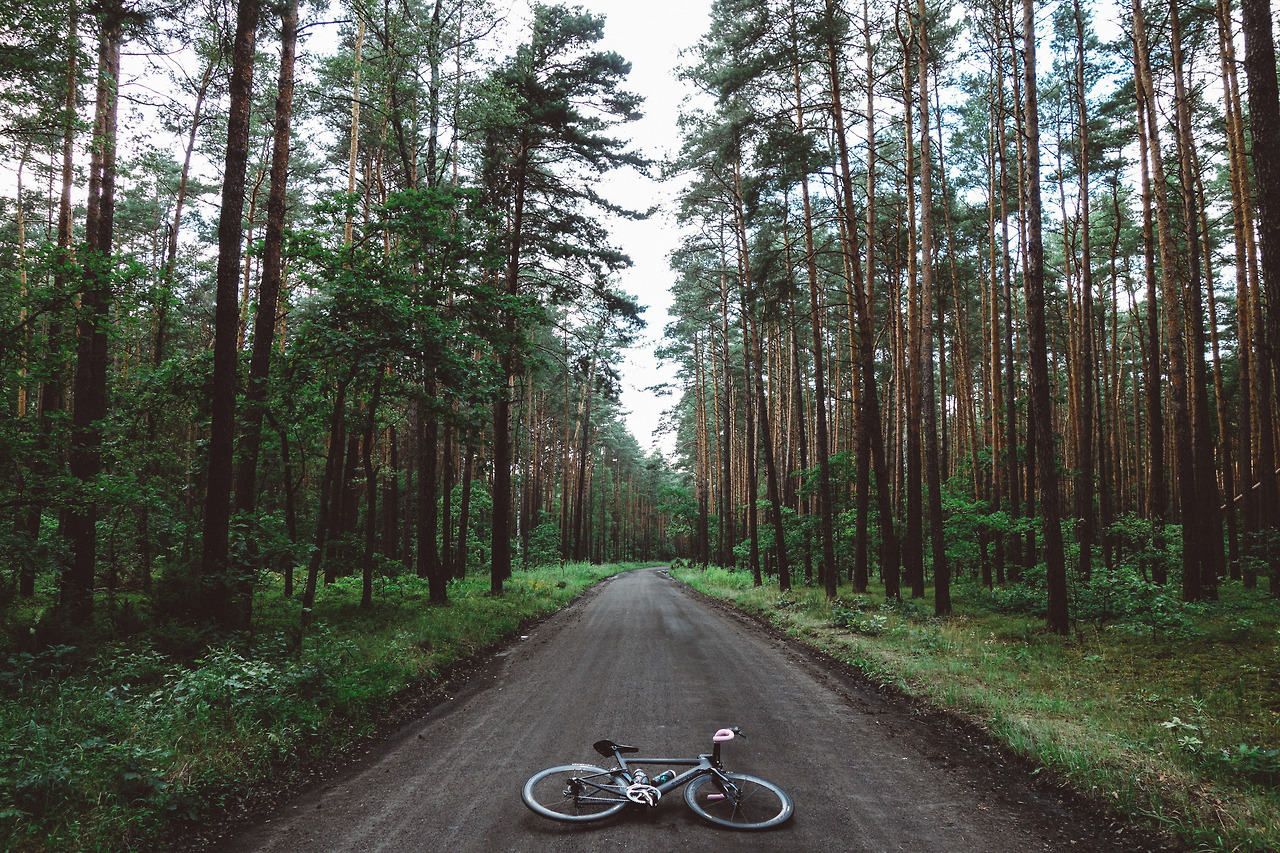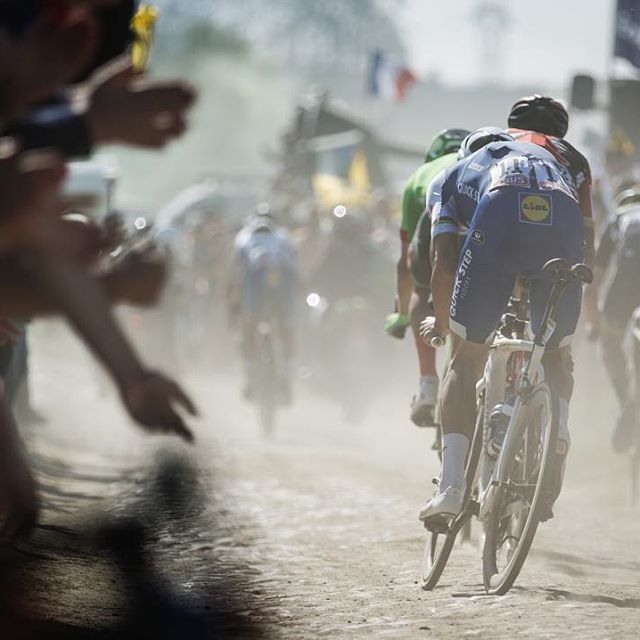La Vie Velominatus, Part III: Urban Riding

There is little in life that compares to a ride along a quiet country road. This surely is the altar of our sport, where all the greatest qualities of cycling are brought into relief by the simple act of propelling yourself along by your own power. Despite being social creatures, the experience is heightened by solitude; when no one else is witness this glorious act, we are allowed to slip further into the simplicity of the act. Our arms reaching out to the bars, the rhythm as our legs spin the pedals, the feel of the machine as it glides along effortlessly, the feeling of power as we stand to accelerate over a hill, the wind in our face, knowing it’s generated by our own speed. There is only the road, the machine, and ourselves.
Alas, for most of us, this experience is reserved for special rides when circumstance finds us within reach of such a place. Indeed, many of us spend the majority of our time riding the busy roads found in our urban lifestyles, not deserted country lanes. This reality has us facing a choice between not riding or riding amongst traffic that threatens a significant negative impact on our well-being should something go sideways – like, for example, your bicycle.
While it is inherently more dangerous than riding on quiet roads, the risk of urban riding can be managed somewhat through vigilance and discipline. We must constantly be aware of our surroundings and understand not only the risks traffic poses to us, but also the unpredictability we ourselves bring to a driver who doesn’t understand the way a cyclist thinks, and what we might do next. The bicycle and the traffic together form two parts of a dangerous equation where we control few of the variables and stand to lose a great deal should something go wrong. In light of this, we should focus on maximizing the elements we can control, and marginalize those we can’t.
- Ride predictably. When out training in town, consider yourself to be riding in the bunch, except the other riders are cars that can kill you. Just like riding in a group, when in traffic, hold your line, signal when there’s a hazard or when turning, and generally ride as predictably possible.
- Ride on the sunny side of the street. If there is a shoulder, ride in it, but if not, stay as far to the side as you safely are able to. Don’t ride so far to the side that it means you might hit something that might cause you to move erratically; there’s nothing safe about suddenly flying out into traffic because you hit something at the side of the road.
- Only ride through puddles you can see the bottom of. Water tends to accumulate along the side of the road, and has a nasty habit of being smooth on the surface regardless of what the bottom looks like. If you can’t see the bottom of the puddle, it’s safer to ride around it than it is to ride through it and risk getting launched by a hidden pothole.
- Ride aggressively defensive. If there’s a narrow section of road coming up where it will be dangerous for a car to pass, signal to the cars behind and swing out into the middle of the lane until it’s safe for them to pass.
- It’s helpful to be able to accelerate quickly to move with traffic if necessary. In the event that you’re riding in a lane in order to discourage cars from passing, it’s good to move at the same speed as the traffic in order to piss them off slightly less and reduce the chance that they go all gansta on your ass and hit or shoot you out of spite.
- Be gracious. If a car does the right thing, wave at them in thanks. If you know you are holding them up because you’re obstructing their path, move the side as soon as it’s safe and gesture your appreciation of their patience.
- Don’t escalate. You will invariably be placed into a dangerous situation by a driver who is either ignorant of the danger they caused you or is simply an ass. In both of these cases, screaming obscenities at them will only serve to put them on the defensive and make them hate cyclists even more than they already do. If you absolutely must say something, do your best to let them know why what they did was dangerous; if you’re polite and assertive, the message is much more likely to find it’s way home.
- Details matter; pay attention to the cars around you. Take note of the subtle signals the drivers are sending you. Are they overly fond of the brake pedal? Are they speeding? Are they swerving, texting, or otherwise distracted? Or do they drive predictably and use their turn signals properly? These things will tell you a lot about how safe you’ll be when they’re close to you.
- Avoid overly dangerous routes. Ride on the roads you need to in order to train properly, but also avoid unnecessarily dangerous areas or only ride them when traffic is at it’s lightest. Roads with good shoulders are preferable and, counter-intuitively, bike paths are not always safer places to ride; these are often filled with people of a variety of skill levels who may not be paying attention.
- Lastly, cycling is easier to enjoy if you’re alive and in one piece; always ride to proactively avoid placing yourself in risky situations when possible and have a plan if you find yourself needing to take a risk.
Some fantastic riding can be had on urban roads. Always be careful to understand your risks; be agressive when safety requires it, and defensive when it doesn’t.
Vive la Vie Velominatus.


Nice to review this article… I think it is time appropriate Ride safe this weekend gentlemen..
Nice article and tips frank. I’m a British Cycling trained Bikeability instructor and SkyRide Local leader and most of what you say is taught by BC. When we instruct to school children (and adults)we are very much of the ride assertively, claim the lane style. I fully endorse a right (UK) signal but lefts are unnecessary, although a courtesy. A clear road position and a good look behind lets cars know you are about to do something.
A nice test is to ride at the side of a main road (60 mph) and occasionally do a really obvious look behind as your hear a car approaching and they will pass six feet away. This is scientific fact!
I concur with a poster above-never once had issues in London as was always a lot faster than the traffic in most places in central London. In Lincoln I have had three isolated incidents of random drive-by abuse. Lincoln does literally have the most pointless ‘bike lanes’ in the world though.
I don’t know I live in a pretty large urban area (Seattle), granted it’s not NY or LA or somethng, but I’ve found (and been shown) some pretty sweet long routes for training rides that don’t put me in dense traffic with homicidal drivers very much at all. Mainly I leave my in-city neighborhood and take the bike lane out I-90 and ride Mercer Island, Newcastle and other Eastside residential areas. Sure there are cars and you have watch yourself, but I don’t feel like I’m putting my life at risk every ride. I also ride downtown and on errands in denser traffic but generally not right at rush hour and I know which streets to take and which to avoid. I make it a point not to drive to somewhere to bike (unless it’s a race or event) that just sounds like a hassle, plus I’d be wasting time I could be riding (not to mention gas).
Are you telling me there are people who’s rides consist of nothing but busy access roads and arterials? They have more V than I. Ride out to the suburbs and semi-rural spaces. Club riders usually know where to go. Also those places tend to have some nice hills.